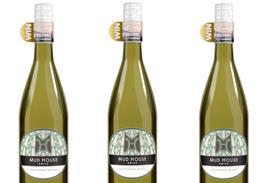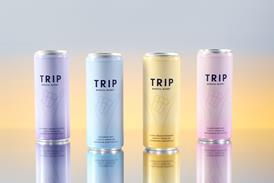It’s dog eat dog in the butters and spreads category as manufacturers go head to head in a bid to win over consumers, and against this background appear promises galore of provenance, taste and health.
“Product origin is crucial to people’s perceptions of the dairy category in general and specifically butter,” says Kerrygold marketing controller Alison Palmer. “Butter sits in a very crowded category and provenance is a key selling point in brand differentiation.”
She claims that local produce in particular is in demand because shoppers like to feel they are helping their own communities, but that consumers are extremely broad-minded about what actually constitutes ‘local’. The company’s latest advertising highlights the brand’s Irish heritage and has met with a positive consumer response. “Although it is not strictly British, consumers still perceive Ireland to be local to them,” she says. “When we researched the new ad campaign on a test audience, we found it had a powerful influence on consumers.”
Local matters
Dairy Crest has also latched on to the importance of ‘local’ in the butters and spreads category. “Some 65% of UK consumers would be disappointed if they found out that a brand they believed to be British was actually from abroad,” says marketing controller for spreads Nathan King.
With this in mind, Dairy Crest ran a controversial ad campaign earlier this year highlighting Anchor’s New Zealand background, while promoting Country Life’s British roots. “The goal of the campaign was to set the record straight and allow consumers to make an informed choice, as research showed that 39% of Anchor consumers were under the misconception that Anchor was a British brand” says King.
He claims that the campaign proves that provenance is a major concern for butter and spread consumers. “Prior to Country Life’s campaign with John Lydon, Anchor had the biggest butter and spreads market value share,” he claims. “But Country Life has now overtaken Anchor in value share for the first time ever.” Nielsen figures show that Country Life has a value share of 7.6% versus Anchor’s 7.1% [four weeks ending August 8, 2009].
Taste and health
However, Arla says that where a butter or spread comes from pales in importance compared to its taste and health benefits as far as consumers are concerned.
“We have seen no impact on Anchor’s sales as a result of the campaign,” claims Anchor and Lurpak group brand manager Stuart Ibberson, adding that Country Life has seen growth only due to its promotional activity.
“Country of origin is not something that is top of mind for the majority of butters, spreads and margarine consumers,” he says. “The key purchase drivers in this category are taste and health, hence why Lurpak and Flora are the number one and two brands in the market.”
Arla has seen great success by creating healthier versions of existing brands in order to meet consumer demand for both health and taste. “The need for unsalted products led us to launch unsalted versions of Lurpak spreadable and Anchor Block Butter,” says Ibberson. “Both products are doing very well, with Lurpak unsalted spreadable worth £12.6m and Anchor unsalted block worth nearly £2m.”
Not wanting to miss a trick, Kerrygold has been looking at salt reductions and earlier this year launched Lighter Softer Reduced Salt spreadable, which not only has 25% less fat than its standard version, but also 25% less salt than the 2008 recipe.
Spreading the health message
But try as they might to offer consumers healthier options, butter brands have some serious competition from dairy spreads when it comes to the health stakes.
In February the Food Standards Agency launched a saturated fat reduction campaign, which advises consumers to reduce saturated fat intake by swapping butter for a lower-fat alternative a tip that Unilever is only too keen to pass on. “The Flora team has been working for years to promote the health benefits of spreads, particularly by educating consumers to the dangers of consuming too much saturated fat. It’s promising that the FSA is investing in this message, too,” says category director for spreads Phil Ellis.
The company is running full steam ahead with its ‘Goodness of Margarine’ campaign, which involves educating consumers about the ‘good’ fats in spreads. “The campaign positions spreads as not only a healthy option, but also as an important part of a balanced diet,” claims Unilever.
Dairy Crest is also pushing the health message, having just forked out £5m relaunching Clover. With the slogan ‘churned like butter, half the saturated fat’, it is keen to convey the message that the spread offers the best of both worlds. “The redesign aims to attract health-motivated consumers by highlighting its responsible attitude to health while retaining its taste values,” says King.
With strong offers all round, the future looks particularly bright for the butters and spreads category. In fact, not even the recession can hold it back. Says Unilever: “With an increase in the number of consumers eating in the home and a steep rise in the number of lunchboxes going into schools and workplaces, the butters and margarines category is likely to benefit from an increase in frequency of purchase.”















1 Readers' comment